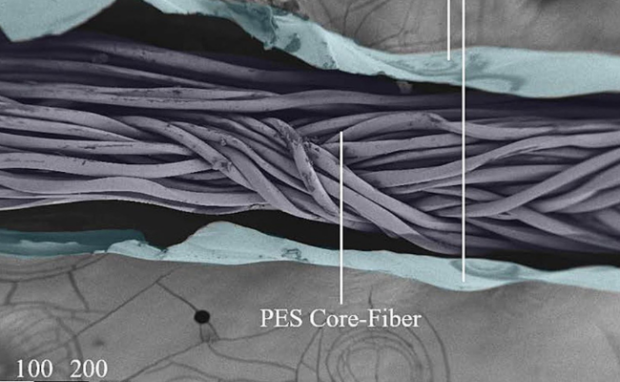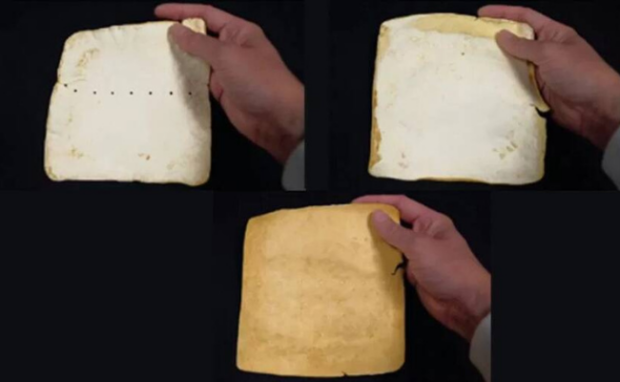axiebet88 Scientists develop self-healing concrete
Drexel University created self-healing concrete by imbuing ordinary concrete with living organisms. Water eventually seeps into the concrete once it develops cracksaxiebet88, causing its endoscopic bacteria to move toward the surface and fill it with calcium carbonate. As a result, the material can repair itself within two days.
Concrete is one of the most commonly used materials in the world, but producing it emits lots of carbon emissions. Modifying it to repair itself could reduce the need for constant repairs, which could lessen the use of more concrete. Moreover, that material could save people repair costs if it could heal small cracks in a few days.
This article will elaborate on this self-healing concrete that uses bacteria. Later, I will discuss other recently developed self-repairing materials.
Article continues after this advertisement How does the self-healing concrete work? Photo Credit: drexel.edu
Photo Credit: drexel.edu
Drexel University researchers developed a new polymer called BioFiber coated in bacteria-infused hydrogel. It’s all inside a damage-responsive casing half a millimeter thick.
FEATURED STORIES TECHNOLOGY Galaxy Buds3 Pro: Delivering tailored sound wherever you go TECHNOLOGY New NYU drug attacks cancer cells without harming healthy ones TECHNOLOGY Xiaomi Smart Ring might adjust to your fingerThey arranged the BioFibers in grid patterns as they poured concrete, reinforcing the material. PopSci compares it to adding straw or horsehair to strengthen bricks in ancient times.
However, the BioFiber adds self-restoring properties to the concrete. “In our skin, our tissue [repairs] naturally through multiplayer fibrous structure infused with our self-healing fluid: blood,” said Amir Farnam, an associate professor at Drexel.
Article continues after this advertisement“These BioFibers mimic this concept and use stone-making bacteria to create damage-responsive, living, self-healing concrete,” he added. Each BioFiber contains Lysinibacillus sphaericus, the endoscopic bacteria behind the self-healing concrete.
Article continues after this advertisementIt lives in soil and produces rock-like calcium carbonate as it consumes nutrients. That characteristic inspired the Drexel scientists to infuse it into concrete.
Article continues after this advertisementThey discovered that concrete develops cracks under stress, causing water to seep into it. In response, the Lysinibacillus sphaericus pushes out toward the surface.
It produces calcium carbonate as it approaches the surface until it eventually fills cracks with cement scabs. That process is similar to how blood coagulates to protect and heal cuts.
Article continues after this advertisementPopSci said self-repairing concrete healed itself within two days of testing. Also, the website explains it could reduce carbon emissions from cement production.
You may also like: Graphene oxide improves 3D-printed concrete
It said concrete is Earth’s second most consumed material, so scientists have been developing alternatives. On the other hand, others, like the Drexel University experts, find ways to extend its longevity.
Concrete usually weakens and breaks down 50 years after setting. However, self-repairing concrete could fill its cracks to extend its lifespan, reducing the need to use more concrete for repairs.
Researchers need more research and development to prepare the material for practical applications. Nevertheless, self-healing concrete may become a staple building material soon.
Other research on self-repairing materials
 Photo Credit: allthatsinteresting.com
Photo Credit: allthatsinteresting.com
Newcastle University and Northumbria University researchers have also created a self-mending material for clothing. They developed it using the Ganoderma lucidum mushroom!
It is known as “Reishi” in Japan and “Lingzhi” in China. Fungi usually produce root-like threads called hyphae that form fabric-like structures called mycelium.
The researchers published their findings and stated: “Self-healing is possible with minimal intervention after a two-day recovery period.” Using Mycelium-based materials is common in various industries like construction and textile manufacturing.
However, production typically kills chlamydospores, spores that help fungi regenerate. That is why the researchers combined mycelia, chlamydospores, proteins, carbohydrates, and other nutrients in a liquid. It encouraged the growth of a “skin” that people can detach and dry.
Their research paper, Fungal Engineered Living Materials, states, “The results suggest that mycelium materials can survive in dry and oligotrophic environments.”
Their production method maintains the chlamydospores, enabling the fungi to grow new hyphae over holes. As a result, their material repairs itself.
You may also like: A fasting diet could be harmful for your descendants
The researchers admitted that the final product is too thin and delicate for garments. The experts suggested combining layers or plasticizing the fungal cloth in glycerol.
The material should also be able to close holes faster. Nevertheless, the researchers believe it can become material for self-repairing clothes. After all, it contains living cells people can tweak in numerous ways.
They wrote, “The ability of this regenerative mycelium material to heal micro and macro defects opens interesting prospects for unique product applications in leather-goods replacements such as furniture, automotive seats, and fashionwear.”
ConclusionDrexel University researchers created self-healing concrete by infusing regular concrete with bacteria. The microorganisms fill cracks with calcium carbonate to extend the construction material’s lifespan.
We could reduce carbon emissions from concrete production if self-healing concrete becomes a viable alternative. Moreover, it could save everyone money in repair costs.
Subscribe to our daily newsletter
Learn more about BioFiber and self-healing concrete on its ScienceDirect webpage. Alsoaxiebet88, check out other digital tips and trends at inquirer Tech.
TOPICS: READ NEXT Stanford, Meta helps make AI move like humans First CRISPR medicine now in the US EDITORS' PICK Hev Abi reflects on being a modern Filipino hip-hop icon Maymay Entrata featured in Grammy’s ‘It Goes To 11’ series LIVE UPDATES: Severe Tropical Storm Kristine Tim Cone, Ginebra locked in on getting back at TNT for PBA title West PH Sea: Indonesia drives out China coast guard ship from disputed waters LIST: Class suspensions in Cebu on Oct. 24 due to #KristinePH MOST READ LIVE UPDATES: Severe Tropical Storm Kristine West PH Sea: Indonesia drives out China coast guard ship from disputed waters LPA outside PAR may become tropical depression Friday – Pagasa Metro Manila, portions of Calabarzon placed back at Signal No. 2 View comments
